Stepping back in time: a stroll through Bremen´s oldest district
TourismBremen´s Schnoor combines architecture and history with entertainment, shops and places to eat
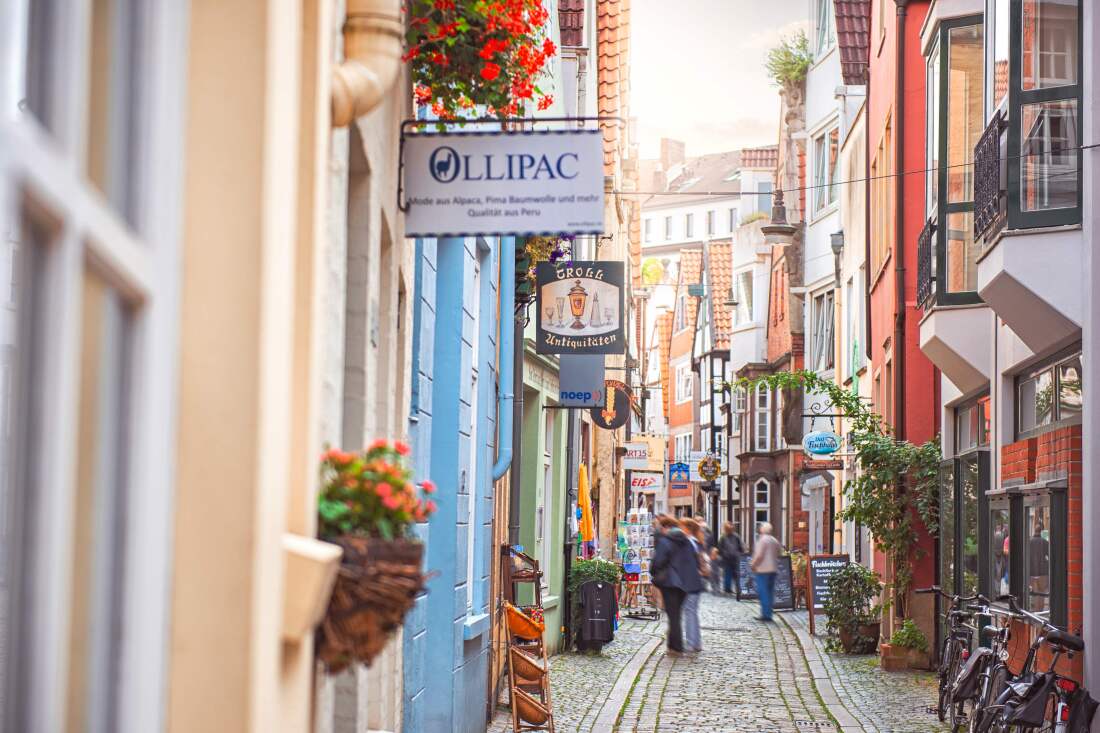
The Schnoorviertel – a picturesque district in the heart of Bremen's city centre. Locals and tourists alike stroll through the winding alleyways. To the left and right, lovingly restored little houses are strung together like pearls on a string – in Low German it is called "Schnoor" – housing quaint craft shops, cosy patisseries and cafés or unique art galleries. Strolling through the Schnoor takes you on a journey into the past.
In 2018, the neighbourhood also caught the attention of the US newspaper "New York Post", which praised the old town district as one of the "coolest streets" in the world as part of an online picture series – the only recommendation for Europe. But what makes the Schnoor so special that it is always a centre of attraction for Bremen visitors and locals?
Multifaceted neighbourhood: shopping and gastronomy
If you have the opportunity to stroll through the idyllic streets while restaurants and shops are closed, you will experience a picturesque idyll away from the hustle and bustle of the city in the early morning, evening or at night. During the day, the Schnoor is naturally very busy and lively. After all, there are plenty of high-quality products and typical Bremen specialities to discover behind the historic walls. The charming, cute shops are a great place to browse and you will quickly find what you are looking for in souvenirs. The diverse shopping world includes books and brushes, candles and children's clothing, soaps and knitwear, musical instruments and sheet music. But toys and model toys and storm-proof umbrellas from the traditional umbrella maker are also available and Christmas dreams come true all year round in the Schnoor. Incidentally, the shops are also open on Sundays from 11 a.m. and 4 p.m. from 1 April to 31 December.
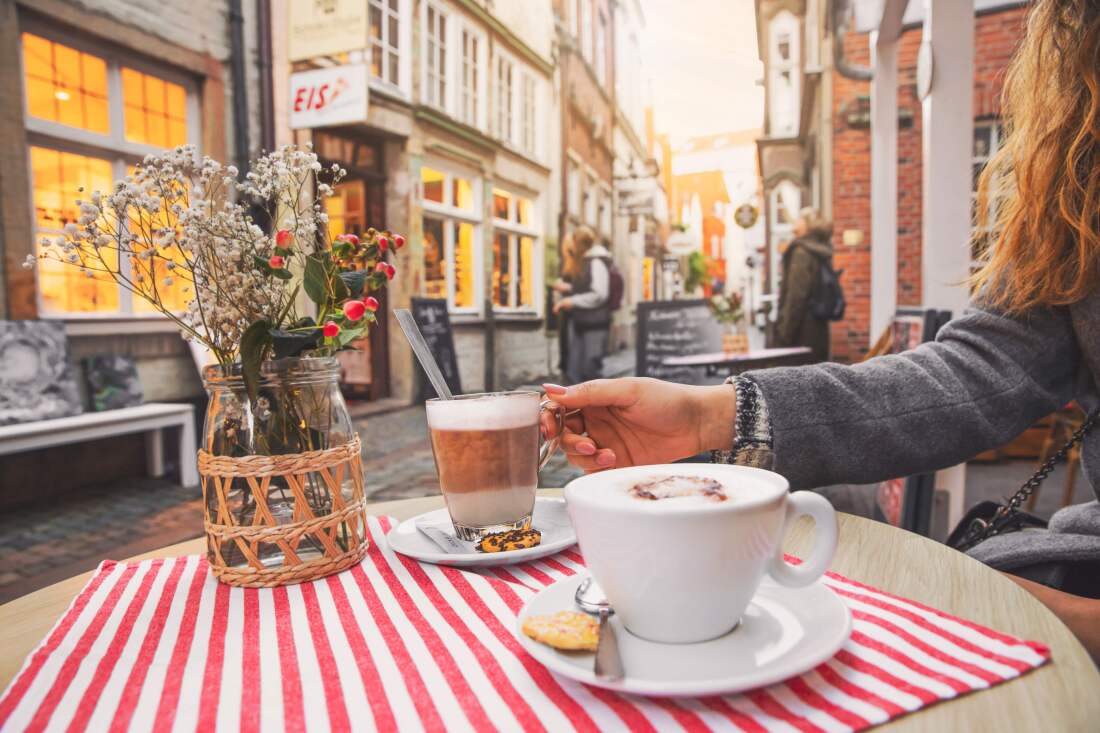
No visit is complete without sampling the local food and drink. Bremen is known for kluten (peppermint fondant), klaben (stollen-style cake) and babbeler (candy sticks), as well as tea, coffee and confectionery, home-made ice-cream and waffles. Besides the traditional bakeries, cafés, tea shops and patisseries, there are also many inviting restaurants in the Schnoor quarter. They offer everything from traditional Bremen cuisine, where Labskaus, curly kale and knipp (oatmeal with meat) are served, to fish delights and international specialities such as Spanish tapas, Moroccan and Mediterranean specialities or sushi. An Irish atmosphere can be enjoyed in Little Mary's Irish Pub.
Art and culture in the Schnoor
Small art galleries also line the pretty string of pearls – another translation of "Schnoor" – and take you into the creative world of modern art. Antique pieces of furniture, decorative items, plants and many other unusual treasures can be found in "Schnoor One" – where photographer and artist Phil Porter has created a unique shop with an experiential character. Fans of "Plattdeutsch" (Low German) should definitely pay a visit to the library of the Institute for Low German.
The cultural programme in the Schnoor is rounded off by theatre. The Bremen Story House is in the perfect location. The concept, which is unique in Germany, stands for vividly told city history: historical celebrities take visitors into their world up close in the exhibition. They can laugh and marvel, and every now and then it even gets a little spooky. Meanwhile, the Packhaustheater in the Schnoor offers a humorous and modern programme. There are also cultural attractions on the roadside and in the small squares, where fountains and sculptures commemorate real and fictional Bremen residents.
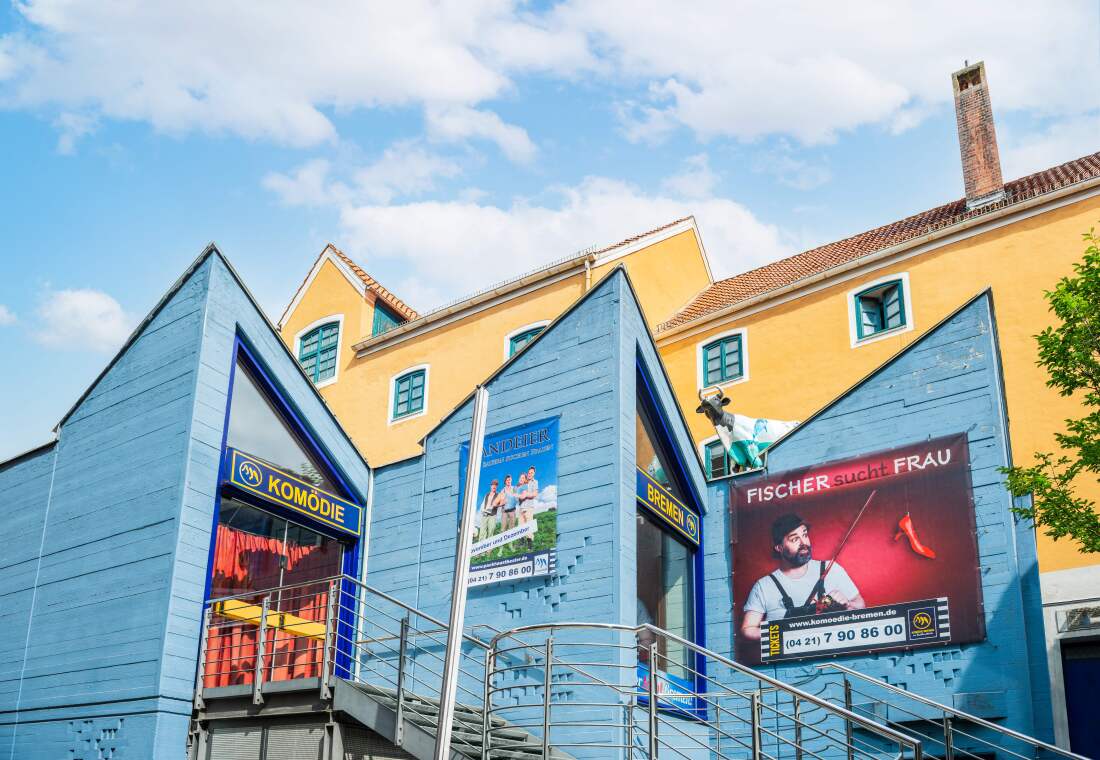
Medieval quarter with winding lanes, timber-frame houses and cobbled streets
The more than 100 small residential and craftsmen's houses, some of which date back to the Middle Ages, were largely spared from the Second World War, have been lovingly restored over the years and are now listed buildings. The neighbourhood, named after its small but beautiful "main street", can be reached from all sides: It is just a stone's throw from the World Heritage Town Hall and Roland, the cathedral and market square, a few steps from the Weser and just a few minutes from the district court and the "Kunsthalle" art gallery.
Thanks to the medieval half-timbered houses and narrow cobbled streets, strollers feel like they have been transported back in time. The ensemble of buildings in the Schnoor is part of the diverse and extensive stock of monuments that is typical of Bremen. Behind the old, carefully restored façades on the winding streets, all kinds of sights await.
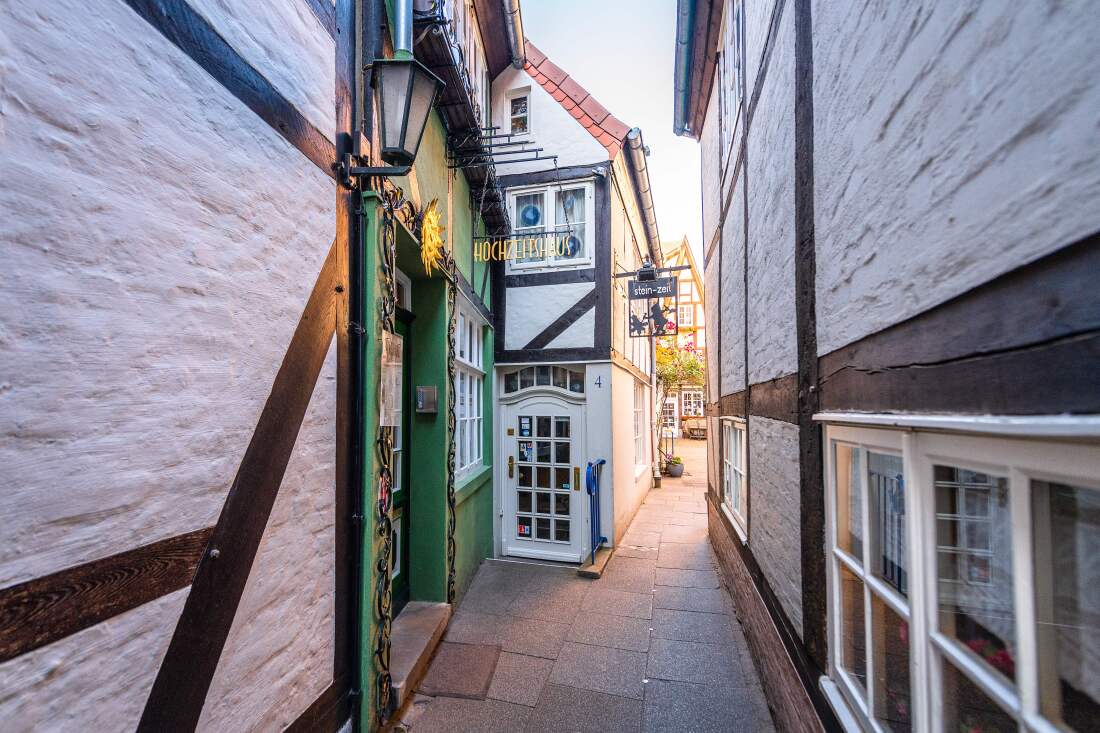
One of the doors, for example, leads to what is probably the smallest hotel in the world, the Hochtiedshus – the wedding house. The tradition of wedding houses dates back to the Middle Ages. Young couples would stay here for a few nights when they travelled from the countryside to the city to get married in Bremen´s cathedral – the Dom. Back then, anyone who wanted to get married in Bremen had to prove that they could afford their own flat here. Nowadays, newlyweds can spend their honeymoon in the Hochtiedshus. Couples without the intention of getting married can also enjoy the romantic atmosphere of the smallest hotel in the world.
A special kind of overnight accommodation can be found away from the hustle and bustle in the city's only monastery, the Birgittenkloster, which opened its doors in 2002. The monastery was designed by Bremen architect Ulrich Tilgner, who created bright rooms, warm colours and beautiful views of the old town.
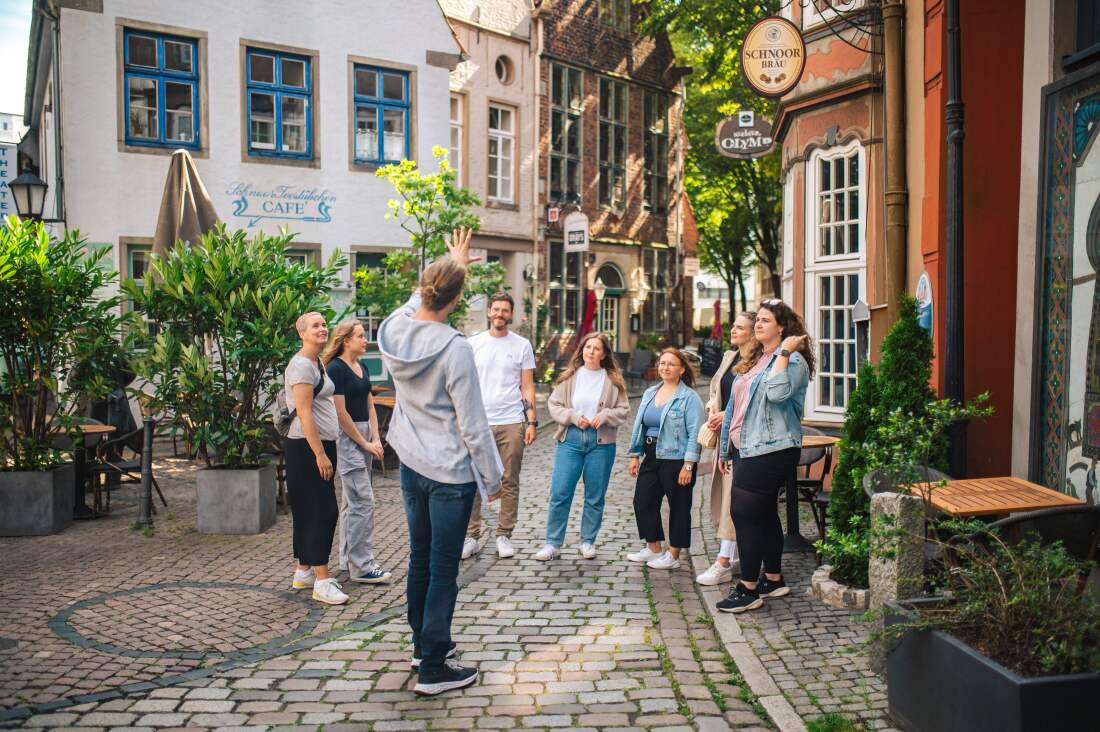
In the Schnoor, you can stroll and wander through incomparably picturesque alleyways and experience restored half-timbered houses like in only a few other places in Germany and the world. There is always something new to discover here. And if you want to find out more about the history of the Schnoor or enjoy a night-time stroll through the district, you can take part in one of the numerous and varied guided tours – these can be booked via Bremen Information or the Bremen Tourism website.
Success Stories
Bremen – Germany's greenest city
The greenest major city in Germany is Bremen - with an average of 60 square metres of sports, leisure and recreation space per person. Parks, sports facilities, but also water areas invite you to relax from the hustle and bustle of the city every day.
Learn moreOur 10 Most Favourite Places Last Year
Bremen has a lot to offer, whether it's sunny or rainy. Of course, you have to capture this in the form of stunning photos. Here are our very personal highlights from the past year.
Learn moreBremen as a Street Art City: when a City becomes the Canvas
From gigantic murals to graffiti hidden in the alleyways: Bremen's street art scene is a vibrant expression of creativity and diversity. With the Street Art Cities app, anyone can now discover this world on their own - and experience the Hanseatic city from a new perspective.
Learn more
